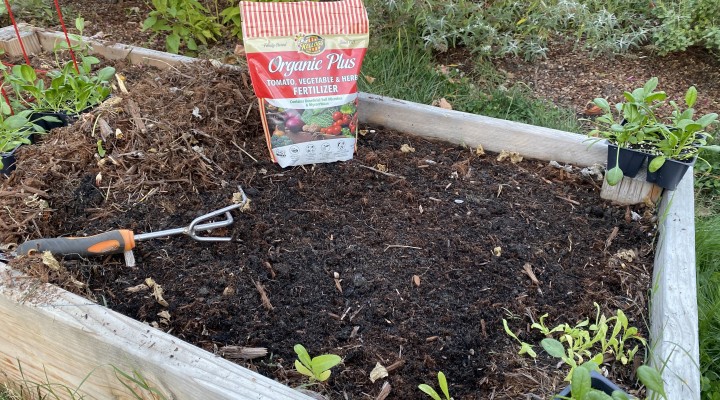It’s the first weekend of November (well, it was when I started writing this!), and it’s time to clean up some of the summer annuals and veggies and plant some winter veggies and flowers. It feels good to be planting something again! And it’s great to live in a place where winter plantings are even a thing!
Last weekend, we went to our favorite nursery and bought spinach, sugar snap peas, snapdragons, calendula, Iceland poppies, and one of my all-time favorite winter flowers, paludosum daisies. No pansies. Maybe because they just don’t grow and spread enough. Or because they’re grandma plants! 😉
Making room for the new
To make room for these new beauties, and to clear out some overgrown, scraggly plants, I removed the humongous zinnias. I’m not quite sure why, but those supposedly 2′ zinnias grew to 5-6′ this summer. Instead of pulling them out, though, I cut them off, leaving the roots in the ground. I’ve seen a couple of sources say that this keeps beneficial microbes and nutrients in the soil. I’m going with that advice and seeing how it works.
After filling a green waste bin with the zinnias, I realized that there were seeds and probably some bugs that the birds would like to eat on those stalks. So, I took the rest of the zinnias and stacked them up next to the compost pile to see if some birds might come and enjoy the pickings. I would compost this material, but I don’t have a chipper shredder, and the stuff was too woody and tough for me to chop up with a shovel. Anyway, what goes to the county in the green waste bin gets composted for others to use.
120 new plants!
I removed two tomato plants from the front raised beds to make room for peas, which will grow up the tomato cages. I’m really hoping it’s not too late in the season for the peas. I planted the spinach seedlings in the same beds, and I know they’ll be fine – they’re a classic winter vegetable.
I prepped the spinach plantings by raking back the shredded cedar mulch, adding some balanced organic fertilizer that contains microbes and mycorrhizae, and working that into the soil for a few inches. After planting the seedlings, I put the mulch back. Hope that doesn’t make the soil too cool, but knowing spinach is a cool season plant, I think it will be fine.
If this fertilizer wasn’t organic, this might be too much (see the video), but it’s a gentle concentration of nutrients, and it works well.
Also, nursery plants can often come with roots that are really pot-bound, with a thick, circling mass at the bottom of the rootball. This can be a problem, keeping the plant from spreading roots and stunting it’s growth. It’s OK to just rip that mass right off, as I do in the video below.
Finally, I must confess, this wouldn’t have happened this weekend if I hadn’t failed with my Labor Day weekend seed sowing! If you saw that post, you saw that we were sowing California poppies, African daisies, snapdragons, and experimenting with Iceland poppies, which were iffy. A little while later, I also sowed some spinach. Well, none of it worked out, and I think it was mostly because the 1″ or more of mulch on all the beds. It kept the soil too cool, and it probably kept some of the seeds from really getting down into the soil, despite my working them in with a rake.
I should have pulled the mulch off the sowing areas until the seedlings were a couple inches tall. I also might not have watered the seeds frequently enough, which was partly because some of the other plants had been too wet, which is another problem I should write about later – trying to balance the needs of lawn and flowerbeds on the same sprinkler zone.














